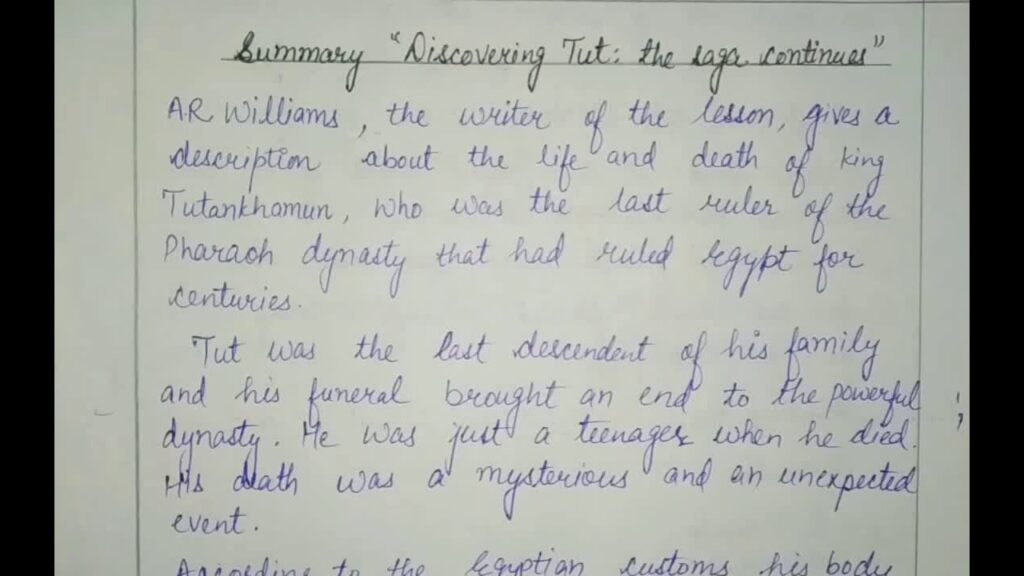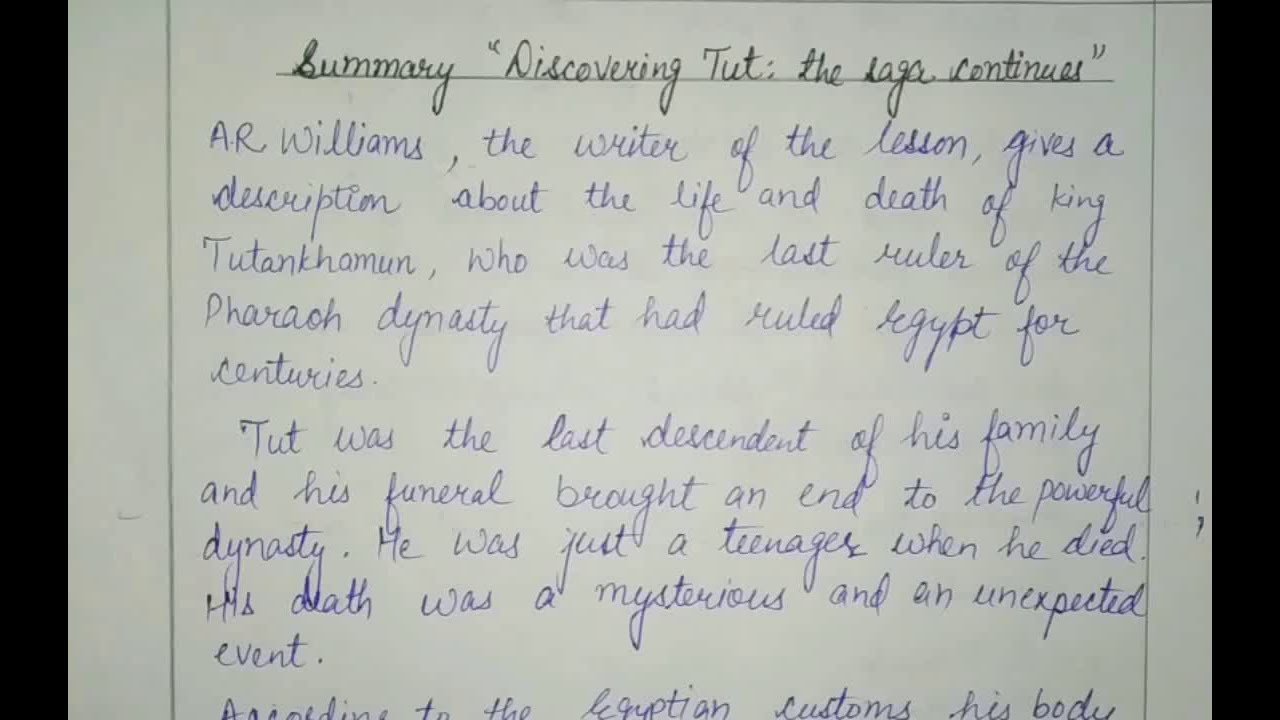
Note Making Class 11 Hornbill Chapter 3, Note-making is an indispensable skill for students, especially in Class 11, where the complexity of subjects increases significantly. This article delves into the art of note-making, particularly focusing on English studies and complex chapters like Chapter 3 of the Hornbill textbook. If you’re searching for effective strategies on “note making class 11 hornbill chapter 3,” you’re in the right place!
Note Making Class 11 Hornbill Chapter 3 Techniques
Cornell Method
The Cornell Method is a systematic format for condensing and organizing notes without laborious recopying, by dividing the paper into specific sections. Here’s how you can use it effectively:
- Divide Your Page: Split your paper into three parts:
- Cues Section: On the left-hand side, jot down main ideas, questions, or keywords.
- Notes Section: The larger right-hand column is for detailed notes.
- Summary Section: At the bottom, write a brief summary of the page.
- Write Down Main Ideas: In the cues section, note the main ideas or questions.
- Expand on Points: In the notes section, provide detailed information on each point.
- Summarize: Use the bottom section to summarize the main points, aiding in quick revision later.
Outlining Method
The Outlining Method is a structured way of organizing notes hierarchically:
- Main Idea at the Top: Start with the main topic or idea.
- Supporting Details Below: List out subtopics and details in a nested format.
This technique helps in visualizing the structure of the chapter, making it easier to remember the flow of information.
Class 11 Note Making Format for Hornbill Chapter 3
Creating a structured format for your notes ensures consistency and ease of review. Here’s a simple guide:
- Title: Name your notes based on the main topic.
- Source: Mention where the notes originated from (e.g., book, article, lecture).
- Date: Always include the date for future reference.
- Headings & Subheadings: Use headings and subheadings to organize your notes.
- Bullet Points: List important facts and details in bullet points, using simple language.
- Abbreviations: Use common abbreviations to save time and space.
- Highlight Key Points: Use highlighting to emphasize crucial information.
- Diagrams/Visual Aids: Incorporate visuals like flowcharts or graphs to simplify complex information.
- Summary: Write a brief summary of the main ideas and facts.
- Review: Regularly review your notes to reinforce learning.
Note Making Exercises Based on Past Year Question Papers
Example 1: CBSE Sample Question Paper (2019-20)
Passage: Balancing the Scales
Artificial intelligence (AI) is revolutionizing the legal field by automating mundane tasks, allowing lawyers to focus on more complex and human-centric tasks. AI aids in data analysis, understanding human speech, and making data-driven decisions, but cannot replace human judgment and empathy. Note Making Class 11 Hornbill Chapter 3
Sample Note Making Format for Class 11 Hornbill Chapter 3:
Title: Artificial Intelligence: A Helpful Tool
- AI’s Role:
- Assists in work
- Simplifies life
- Doesn’t eliminate jobs
- AI in the Legal Field:
- Understands speech and objects
- Makes data-driven decisions
- Translates languages
- Handles search tasks
- AI’s Limitations:
- Can’t perform high-level tasks (e.g., writing legal briefs, advising clients, appearing in court, making quick decisions)
- AI’s Functions:
- Gathers data
- Predicts outcomes
- Assesses return on investment
- Considers settlements or arbitration
Key to Abbreviations:
- AI: Artificial Intelligence
- recog.: recognizes
- langs.: languages
- apprng.: appearing
- invt.: investment
Summary: Artificial Intelligence: A Helpful Tool Artificial Intelligence is a helpful tool in the legal field. It can’t perform high-level tasks like writing legal briefs, advising clients, or making quick decisions. However, it can gather data, aid in research, and make data-driven decisions. AI can understand speech, translate languages, predict outcomes, and assess the return on investment. It’s beneficial for legal firms.
Tips for Effective Note Making Class 11 Hornbill Chapter 3
Effective note-making is a crucial skill that enhances understanding and retention. Here are some tips for note making class 11 hornbill chapter 3:
- Be Attentive: Pay close attention during lectures or while reading.
- Use Your Own Words: Paraphrase information to understand it better.
- Identify Key Points: Focus on main ideas, important facts, and key concepts.
- Use Bullet Points: Organize information in a structured manner.
- Highlight or Underline: Emphasize important terms and definitions.
- Use Diagrams and Charts: Simplify complex information with visuals.
- Develop Abbreviations: Save time and keep notes concise.
- Leave Space for Additional Notes: Add extra information or clarifications later.
- Review and Revise: Regularly go over your notes to reinforce understanding.
- Stay Organized: Keep notes by subject and topic, using folders or notebooks.
- Practice Active Recall: Strengthen memory by recalling main points without looking at your notes.
- Seek Clarification: Don’t hesitate to ask questions for better understanding.
Benefits of Note Making for Class 11 Hornbill Chapter 3
Note making class 11 hornbill chapter 3 offers numerous benefits, especially during exams: Note Making Class 11 Hornbill Chapter 3
- Enhances Understanding: Breaks down complex information into manageable parts.
- Improves Retention: Writing notes enhances memory retention.
- Facilitates Revision: Well-organized notes make revision efficient.
- Encourages Active Learning: Engages critical thinking about the material.
- Helps Identify Key Concepts: Focuses on main ideas and key concepts.
- Aids in Time Management: Saves time during exams with concise notes.
- Reduces Stress: Comprehensive notes boost confidence and reduce exam stress.
- Improves Organization: Organizes information logically for clear understanding.
- Enhances Writing Skills: Improves summarization and paraphrasing skills.
- Facilitates Group Study: Shares notes for different perspectives and fills in gaps.
Conclusion
By mastering the techniques of note making class 11 hornbill chapter 3, students can significantly improve their understanding and retention of complex subjects like those found in the Hornbill textbook. Effective note-making not only aids in exam preparation but also enhances overall learning and comprehension. Keep practicing these techniques, and you’ll see a substantial improvement in your academic performance. Best of luck with your studies! Note Making Class 11 Hornbill Chapter 3
FAQs on Note Making Class 11 Hornbill Chapter 3
How do you make notes?
To make notes effectively:
- Read the passage carefully to grasp the main idea.
- Identify the main ideas of each paragraph or section.
- Remove unnecessary details and organize important facts logically.
- Decide on a suitable format (e.g., bullet points, diagrams).
How do you summarize notes?
When summarizing notes:
- Maintain unity and sequence.
- Follow the order of the notes.
- Avoid examples, explanations, and repetitions.
- Develop the summary in full sentences, including all main ideas.
- Create a short, precise title that sums up the main theme.
What is note making?
Note making is the skill of condensing information into a shorter, organized format for quick reference. It helps in:
- Preparing for essays.
- Summarizing lecture points.
- Planning speeches or discussions.
- Recording messages or writing notices.
- Summarizing texts for better understanding.
How can you score full marks in note-making?
To score well in note making class 11 hornbill chapter 3:
- Keep notes concise, highlighting main points.
- Use abbreviations, symbols, and shorter words.
- Omit unnecessary words.
- Always provide a suitable title.
- Ensure notes are much shorter than the original text.
By following these guidelines and techniques, you can master the art of note making class 11 hornbill chapter 3 and excel in your studies.
